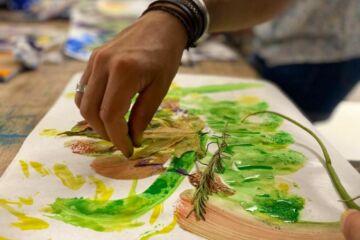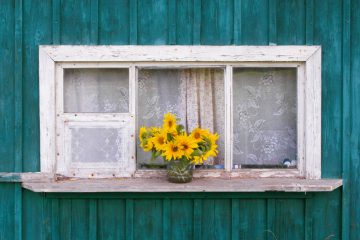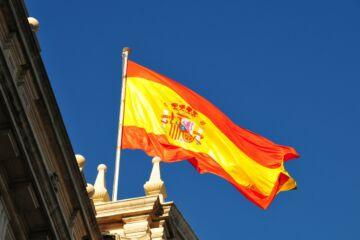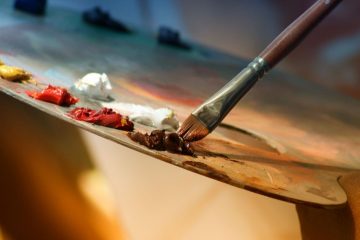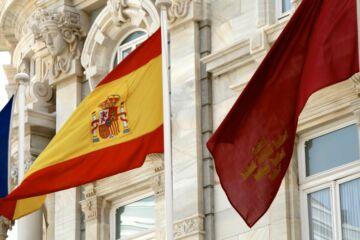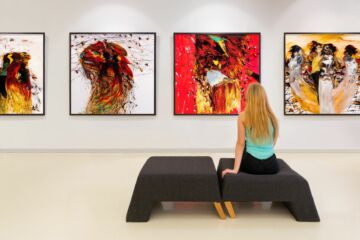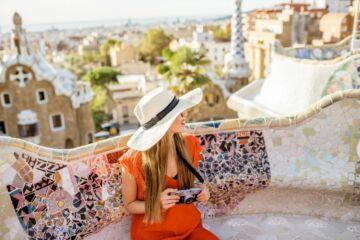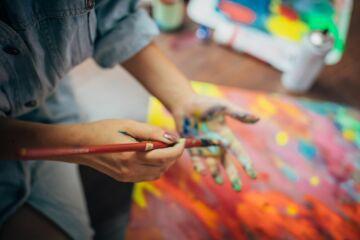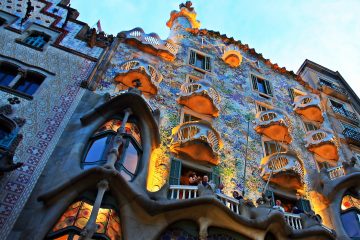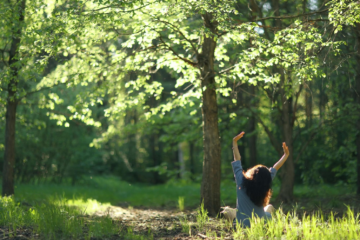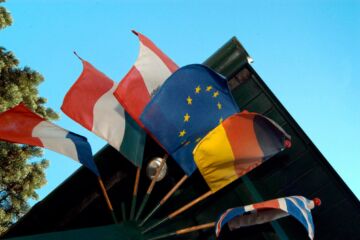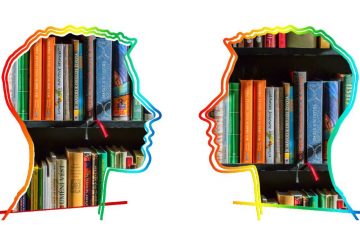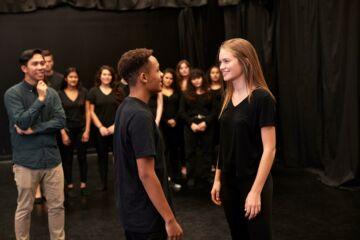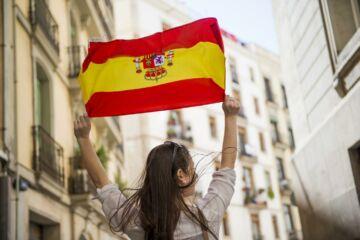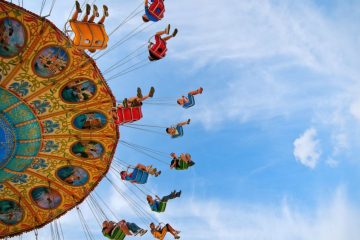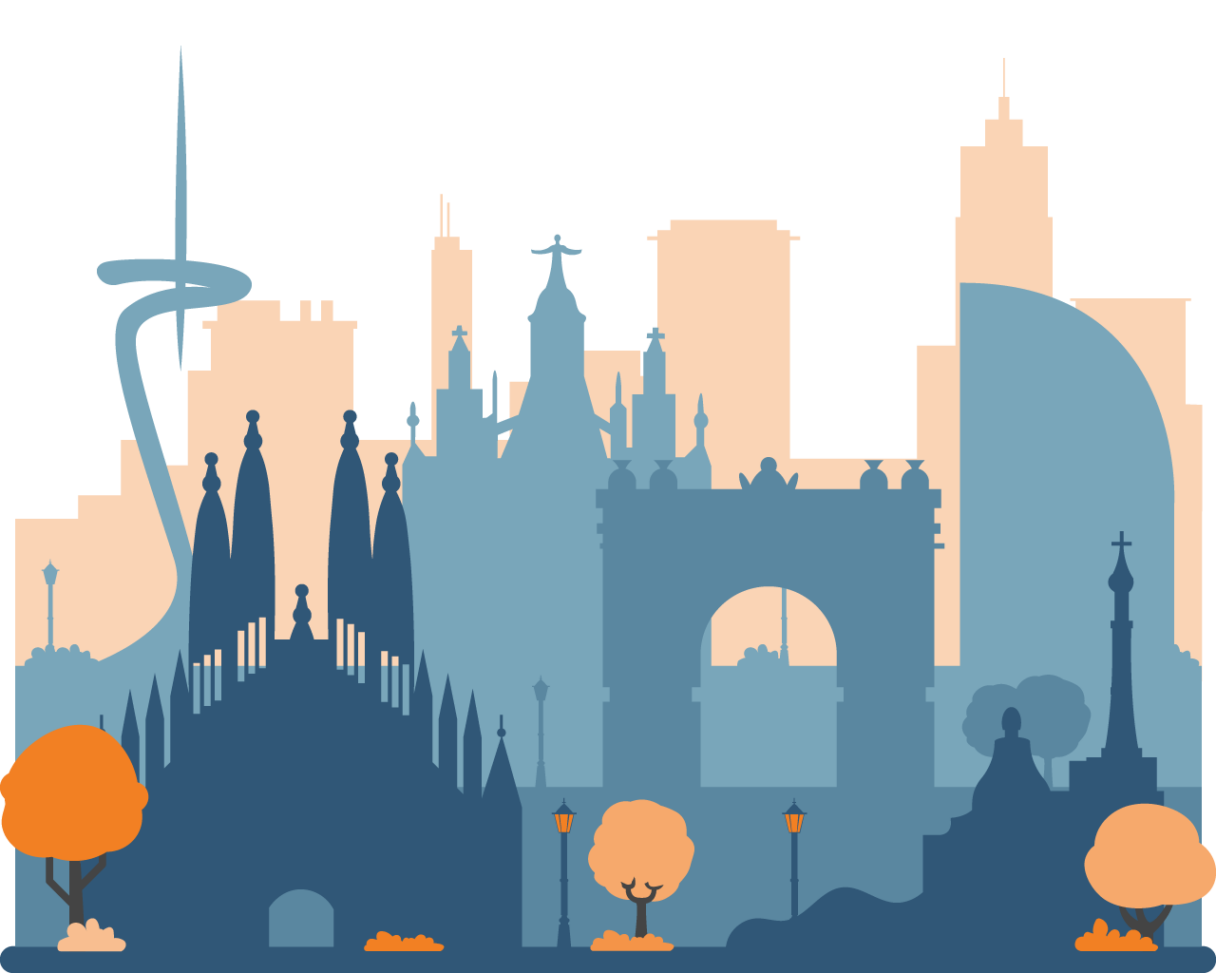
Erasmus Courses for Teachers in Barcelona, Spain
OID: E10247545
A city of colorful architecture, delicious food, lively beaches, and a vibrant cultural scene.
Confirmed Sessions in Barcelona
Reviews
About the Training Centre in Barcelona
Our courses are held in the historic city center of Barcelona, in Rambla Catalunya 15, 2-2, 08007, Barcelona.
Our teacher training center is located in Rambla Catalunya, one of the most beautiful and elegant streets in Barcelona. Just a few steps from the vibrant Plaza Catalunya and the modernist Passeig de Gracia, the school location is perfectly connected with the main cultural sites and different areas of the city and offers a variety of attractive monuments, shops, and restaurants you can enjoy after the lesson.
The palace is a Finca regia modernista catalogada, a “royal cataloged Modernist building”, as you will appreciate from the beautiful floral and geometric decoration around the stairs, and the original floor in each of the rooms of the school.
Virtual Tour
Organization’s Fiscal Data
OID: E10247545
PIC: 897217894
European Academy of Creativity
Address: Rambla de Catalunya 15, 2º2ª, 08007, Barcelona, Spain
NIF: B67520866
Responsible Person (name, function, e-mail, tel):
Dr. Alessandro Pumpo, Director
Email: teacheracademy@europassnetwork.eu; admin.spain@europassnetwork.eu.
Phone: +39 055 1997 3220 / +34 626924733
How to reach us
Since the school is only a few steps from Plaza Catalunya and Passeig the Gracia, all trains, busses, and metro lines offer a perfect connection to it.
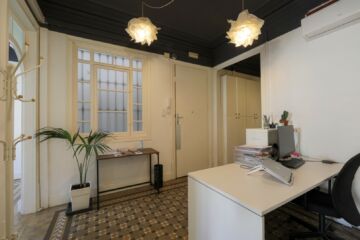
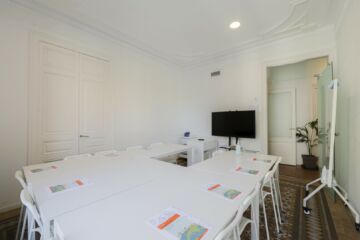
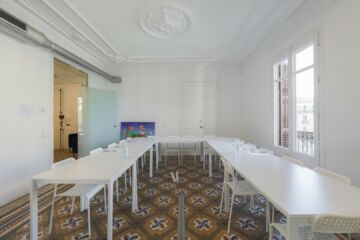
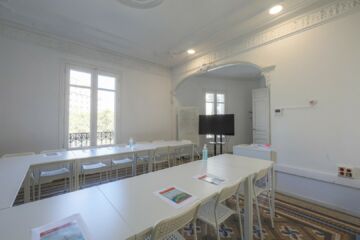
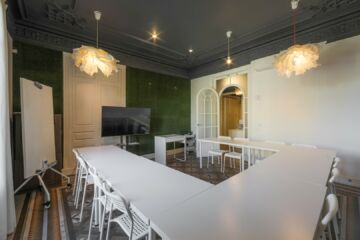
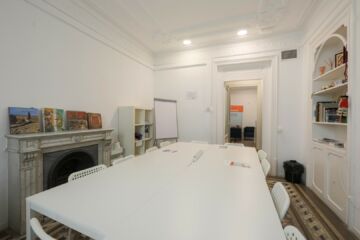
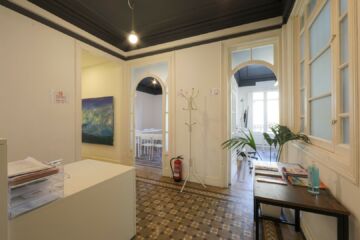
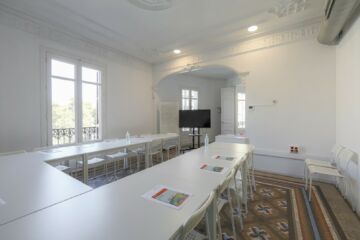
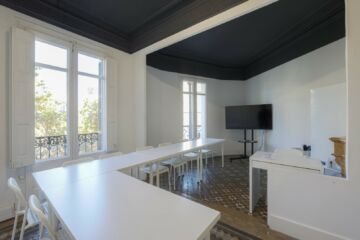
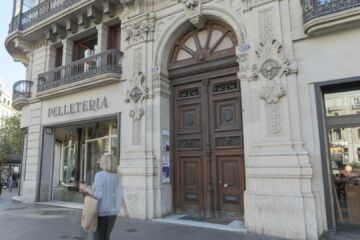
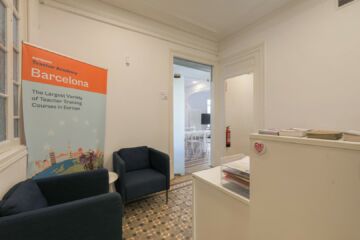

Our Cultural Activities
The following cultural activities are included in the price of each Erasmus course in Spain:
- A guided tour of Barcelona
- Another cultural activity in Barcelona or its surroundings
Our guided tour of Barcelona

Follow our teacher trainers for an informal, fun, and pleasant walking tour in one of the most special districts (“Barrio” in Spanish), the Gracia Barrio. During the tour, you may meet Erasmus + teachers from other courses (if applicable), and decide to stay for some delightful tapas.
During the walking tour, you will walk around Gracia Barrio. This is a residential, creative, hipster district of Barcelona, which displays mainly original Modernist buildings (inhabited by residents still!), which is home to the first house that Antoni Gaudi built in his career, Casa Vicens.
Here you can appreciate the styles that influenced his artistic development, and discover details about life in Gracia in the XX century. Then you will walk towards the many Modernist streets around, and reach the many little squares that characterize the district, such as Plaza del Diamant, Plaza Virreina, Plaza de la Revolución. The history of Saint John’s Church in Virreina Square, will be explained to you where you will find a Modernist Chapel designed by Francesc Berenguer, Gaudi’s assistant, sometimes opened to visitors.
Our cultural activity in Barcelona

Barcelona has so many sites to see that one week may be too short to enjoy all its architecture, art, food, nightlife, nature, and beach life. The following cultural activities are planned to be held on Saturday, or during the week at your best convenience, upon availability.
Bus Turistic (one day)
Enjoy one day on the fun hop on – hop off blue and pink double-decker bus around the city center of Barcelona and its neighborhood.
La Pedrera (2h)
Casa Mila (1906-1912) is one of Antoni Gaudi’s most iconic works of civic architecture. The building is more popularly known as “La Pedrera”, a Catalan word for ‘stone quarry.
Sant Pau (2h)
The Sant Pau Modernist Enclosure, after serving for a century as a public hospital, its rehabilitated pavilions now shine in all their glory. Visiting this exceptional architectural complex is a unique experience.
Casa Vicens (2h)
Casa Vicens is the first masterpiece of Antoni Gaudí and sowed the seeds of later works.
Casa Amatller (2h)
In the Casa Museu Amatller, you can see the transformation from a traditional society based on the old regime to a much more open, dynamic one typical of the industrial and contemporary world of the early 20th century.
Poble Espanyol (2h)
Built for the 1929 International Exhibition, the Spanish village (Poble Espanyol) was created from the desire to concentrate the soul of Spain in a single space.
Golondrinas (2h)
Las Golondrinas are tourist boats that make short trips to show the Barcelona coastline. A different way of getting to know Barcelona.
Mirador de Colom (2h)
The Mirador de Colom, popularly known as the Columbus Monument in Barcelona, was designed by Gaietà Bugas. An elevator within raises the 51-meter-tall Columbus column, constructed of cast iron and designed in a Corinthian manner, to the viewing gallery.
Mirador Torre Glòries (2h)
The Glòries Building, a creation of Jean Nouvel, has been transformed into more than just a vantage point from which to observe Barcelona; instead, it now offers a sensory and artistic experience.
Hop on hop off | Barcelona Bus Turístic
Discover the city of Barcelona with the official sightseeing bus that lets you see and enjoy its most emblematic monuments and buildings.
Best Things to Do in Barcelona

On the coast of northeastern Spain, Barcelona is the capital and largest city of the autonomous community of Catalonia, as well as the second-most populous municipality of Spain, with a population of 1.6 million people within city limits.
Particularly renowned are the architectural works of Antoni Gaudí and Lluís Domènech i Montaner, which have been designated UNESCO World Heritage Site, the Gothic Quarter of the city, and museums devoted to important artists that had been inspired by Barcelona as Pablo Picasso and Joan Mirò.
Nature and sport play a distinctive role in Barcelona, surrounded by long beaches in Barceloneta, Mar Bella, and many others just outside the city, hilltops and forests, such as Montjuic Hill and Tibidabo mountain which make the city the perfect place for hiking, biking, kayaking, stand-up paddleboarding, swimming or sunbathing. Definitely, Camp Nou, Barcelona’s Football Stadium, is a must-see for all football Barcelona FC supporters!
Barcelona is also a paradise for lovers of food and nightlife! On every corner, you can find a variety of high-quality restaurants with traditional Catalan and Spanish dishes and drinks, such as tapas, paella, fideuà, Cava, and Sangria, but also authentic cuisine from all over the world. Every night, live concerts and shows in open-air venues, vintage concert halls, and eclectic buildings transform the city into a complete 24-hour experience.
1. Casa Batlló

One of the most famous modernist buildings, Casa Batlló (reformed by Antoni Gaudi between 1904 and 1906), captivates passers-by along the elegant Passeig the Gràcia boulevard.
On the facade, multicolored glazed ceramics and stained glass form floral patterns and water lilies and shine with the reflections of the sunlight or night light. Inside, modernist furniture and details are combined with blue ceramics and glasses.
2. Sagrada Familia
For an aesthetic and spiritual experience, a visit to Sagrada Familia is definitely worth it. Fruit of the work of genius architect Antoni Gaudí, the project began in 1883 and today construction still continues on the Basilica and is expected to be completed in 2026, 100 years to coincide with the 100th anniversary of Gaudi’s death.
As per Gaudi’s will “Sagrada Familia is made by the people and this is reflected in it. It is a work that is in the hands of God and the will of the people”. As a matter of fact, the work is directly financed by donations made by visitors and the general public, which explains its slow construction progress.
3. Park Güell

No work by Gaudí better explains the genius’s concept of the fusion between nature and architecture than Barcelona’s Park Güell. Gaudí’s Park Güell reveals the perfect interaction between the natural landscape and architectural building and details.
Initially created to host a housing estate in a natural setting in the old village of Gràcia by Eusebi Güell, between 1900 and 1914, the park is now one of the most unusual parks in the world.
4. La Pedrera (Casa Mila)
Casa Mila (1906-1912) is one of Antoni Gaudi’s most iconic works of civic architecture. The building is more popularly known as “La Pedrera”, a Catalan word for ‘stone quarry’, due to its exterior similarity to one.
The facade simulates a rolling sea, adorned with iron balconies largely designed by Josep Maria Jujol, from wave to wave.
Inside, you can find furniture from that period and ornamental elements designed by Gaudí. On the rooftop, ventilation towers and chimneys are covered with the particular technique of trencadís mosaic of ceramic tiles, stone, marble, and glass.
5. Palau de la musica Catalana
The Palau de la Música Catalana is today an incredible venue for concerts and also a breathtaking building to visit.
It was built between 1905 and 1908 by the modernist architect Lluís Domènech I Montaner, as a home for the Orfeo Català (a choral society based in Barcelona) and is a great architectural jewel of Catalan Art Nouveau.
6. The Gothic Quarter

The Gothic Quarter is the historic center of the oldest parts of the city of Barcelona. It retains a labyrinthine street plan, with many narrow streets opening out into picturesque squares.
In the Gothic quarter, you can admire the remains of the city’s Roman wall, several medieval landmarks, and the Gothic cathedral. Among the main sites, are the Barcelona Cathedral (Cathedral of Santa Eulalia), the Pignatelli Palace (at present-day Royal Artistic Circle of Barcelona), Santa Maria del Pi Church, Plaza Sant Jaume, Picasso Museum, and the dynamic Plaza Real.
7. Picasso Museum
Located in the Gothic Quarter, the Picasso Museum of Barcelona hosts more than 4.000 works of the artists, most of them from the formative years up to the Blue Period. Opened in 1963 the museum reveals his deep relationship with the city of Barcelona which lasted throughout his life.
8. Joan Miró Foundation
The Joan Miró Foundation is a museum of modern art dedicated to the Catalan artist Joan Miró, which is located on Montjuïc Hill. The building is an example of rationalist Mediterranean architecture, designed by the architect Josep Lluís Sert, following Joan Miró’s instructions to create a space that would encourage artists to experiment with contemporary art.
Many of the artworks displayed in the building were donated by the artist himself, and represent all the main phases of his artistic development, mainly inspired by Surrealism, Fauvism, and Expressionism, and culminating in the creation of a unique artistic profile.
9. Santa Maria Del Mar

The Basilica of Santa Maria del Mar was built from 1329 to 1384, designed by Berenguer de Montagut, and was considered the place of devotion for merchants of Gothic Barcelona.
It is also known as the “Cathedral of La Ribera”, since it is located in La Ribera district of Barcelona and is the only surviving church in the pure Catalan Gothic style.
10. MNAC – Museum of National Catalan Art
The Museu Nacional d’Art de Catalunya, abbreviated as MNAC, is the national museum of Catalan visual art located on Montjuïc Hill near Plaza Espanya.
The museum contains works of art from the 10th to the 20th century and is especially renowned for its outstanding collection of Romanesque church paintings, and for Catalan art and design from the late 19th and early 20th centuries, including modernism and noucentisme.
Among the main Baroque and Renaissance sections, you can find artworks by El Greco, Velázquez, and Rubens, and in the Modernist and noucentisme section, you can admire works by Ramon Casas, Santiago Rusiñol, Josep Puig i Cadafalch, and Antoni Gaudí.
 Please wait, we're loading the information about the courses. It could take few seconds.
Please wait, we're loading the information about the courses. It could take few seconds.


